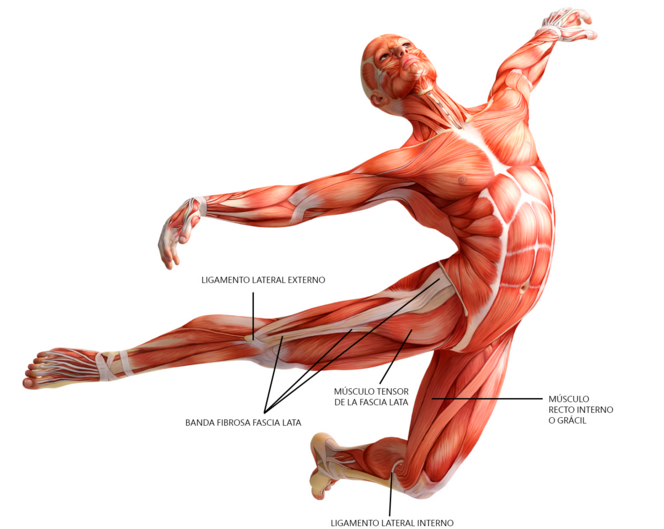We’ve all heard of muscles, ligaments and tendons. But if you’ve ever been to see a physio or remedial massage therapist you may have heard them talking about fascia. And then thought “what on earth is that”? The next question you may be asking yourself is “so why is it relevant to my injury?”
So, what is fascia?
Fascia is connective tissue that attaches, stabilizes, encloses and separates muscles, nerves, blood vessels and organs. It provides support and reduces friction during everyday movement. Essentially, it holds the body together. This thin, web like substance similar to what you would see surrounding a chicken breast, or around each segment of a mandarin.
Fascia is like ligaments and tendons in that they all have collagen as their major component. The collagen fibres are all oriented in a wavy pattern parallel to the direction of pull. Therefore, it is flexible and able to resist great unidirectional force.
A common band of fascia that many of you will know is the Iliotibial Band or ITB, that runs down the side of the leg between the hip and knee. This is often mistaken for a tendon or ligament and is notoriously tight in distance runners and cyclists. If placed under too much tension, the ITB can often be a nasty source of pain.
Why does fascia cause pain?
When fascia becomes too stiff, loses stiffness or has decreased shearing ability, pain and loss of mobility can occur. Chronic or repetitive overload causes the fibres to thicken to protect the underlying muscle. Poor posture, repetitive movements and lack of flexibility pull fascia into poor movement patterns. Trauma and surgery can also cause fibrosis and adhesions to fascia.
All of our fascia is interconnected, interweaving through our muscles and organs. Therefore, distress or tension in one area can create symptoms and restrict movement elsewhere. Ever wondered why your physio or massage therapist is working on your neck and shoulders when it’s your elbow or hand that hurts?
How to release fascia
- Remedial massage therapists use various myofascial release techniques to help mobilise connective tissue and assist with recovery.
- Self-myofascial release techniques such as using spiky balls, foam rollers and tennis/lacrosse balls. These can be of great benefit to help loosen fascial tissue. One technique is to move the affected body part over the roller or ball. Alternatively you can hold a sustained pressure on these objects while at the same time moving a joint or limb.
- Yin yoga, a practice which involves holding poses for longer periods (2-5 minutes) rather than flowing though poses, can also assist in releasing fascial tension. By holding stretches for longer timeframes, it allows the stretch to move beyond the superficial fascia and into the deeper layers.
For more information or to book a remedial massage contact us on 96817255 or BOOK ONLINE today.
~Sal

